Munich-based woodworker Benjamin Planitzer may be reluctant to call himself an artist, but plenty of others refer to him and treat him as such. After completing an apprenticeship as a carpenter, working as an artist’s assistant in Thailand and becoming a master craftsman, he studied sculpture at the Academy of Fine Arts in Munich. Today, his work can be found in art institutions like Museum Boijmans van Beuningen in Rotterdam or Cheongju Arts Center in South Korea. It is also exhibited at renowned museums and events like Frankfurt’s Museum of Applied Arts MAK, Design Days Dubai and London Craft Week.
We asked him about his relationship to his material of choice, the work process behind his objects and sculptures, as well as the tricky question of whether or not he can call himself an artist.
Do you see yourself as an artist or artisan first?
I don’t think I have an unambiguous answer to that question, despite or maybe even because of the fact that I studied art. In Germany more so than in other countries, there is traditionally a strict distinction between art and craft. The arts tend to look down on the crafts with disdain, because crafting objects is perceived as intellectual self-limitation through the reference to materials and the negotiation of technical details.
The wood always remains the wood and the tree. The material takes over part of the design process through its unique properties, intentionally or unintentionally. The material cannot be forced, so I enter into a respectful cooperation with it.`` – Benjamin Planitzer
View this post on Instagram
To a certain extent, I can understand this position. I am cautious about using the term artist, even though that is officially my status. Nevertheless, my existence does not consist solely of pure inspiration, of waiting to be struck by that divine spark. Art comes into being when the mind creates new connections between existing objects and manifests images catalysed through emotions, aided by the unquestioning will to investigate these images. I have reached a point where I fortunately feel completely free of the need to put myself in one of these categories. For me, my work is primarily about one thing: self-gratification.
What are three things you associate with wood?
Wood is probably one of the earliest materials of mankind; as a child you play with sticks, leaves; feel the surface of a wooden table. For me, as for many people, wood radiates familiarity, warmth, but also wildness, undomesticated-ness and archaism.
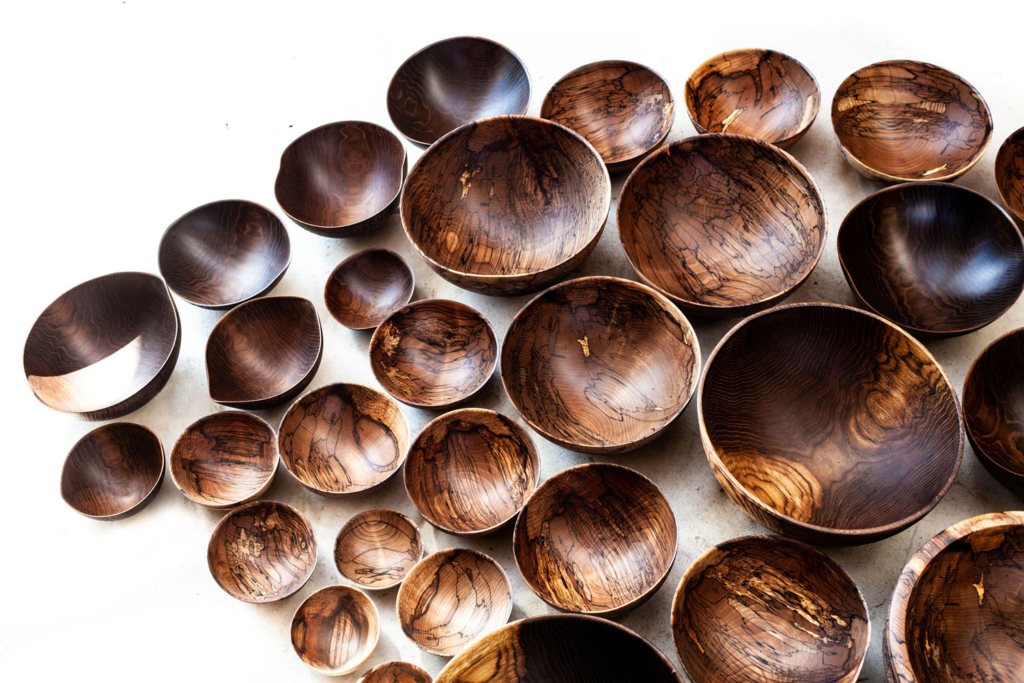
You’ve worked in different countries. Have you learned anything about how different cultures interact with, react to and interpret wood?
I am permanently fascinated by the bamboo scaffolding that is used in China to construct even the tallest buildings. A completely absurd concept for the German engineering mind, but it has worked for thousands of years and still works today.
In Chiang Mai, Thailand, I spent a few weeks in a suburb where many families earn their living by making turned wooden products. Here I was able to experience how little elaborate tool technology can be used to produce the most amazing results; a concrete block with a shaft screwed onto it serves as a lathe, a plastic bucket cut into the shape of a propeller becomes a fan that blows the dust away. I have adopted this lathe design, as well as the courage to improvise and experiment. Everything is allowed so long as it leads to success.
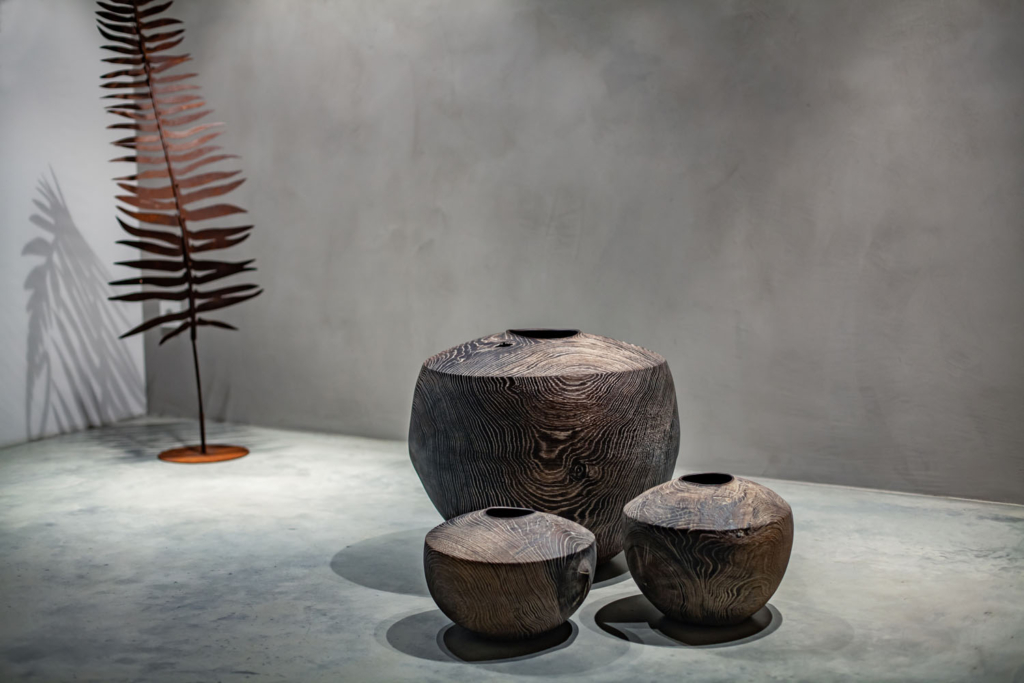
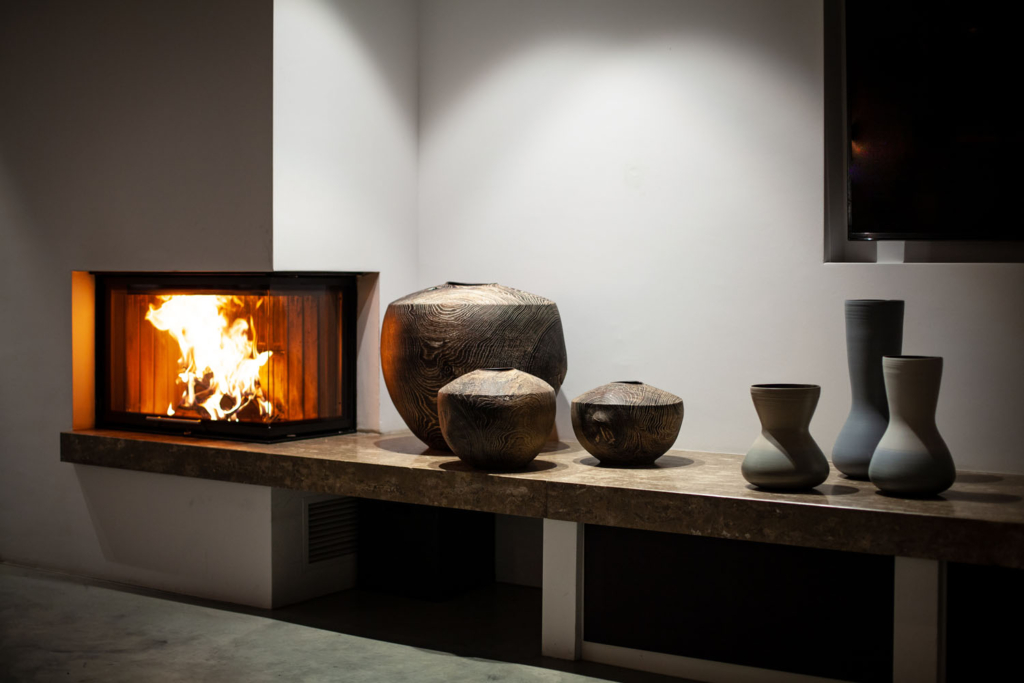
Thais, however, from what I have experienced, mainly use the wood as a base material and then cover it with paint. Possibly because to them, wood doesn’t appear to be of high enough quality. I take a different approach, which could be seen as a symptom of abundance. As an industrial society we are flooded with artificial materials, so the simple, the rudimentary, something like wood has regained a value that it certainly didn’t have 100 years ago.
Do you take your inspiration from the material itself or from turning it into something different?
The wood always remains the wood and the tree. The material takes over part of the design process through its unique properties, intentionally or unintentionally. The material cannot be forced, so I enter into a respectful cooperation with it.
Being good at dealing with the material from a tree means to anticipate, or to know, what the material will do and when. I use the trees wet, freshly felled, and always in one piece, unglued. As soon as you cut wood into boards, dry it, glue it, you take away most of its character, its unpredictability. It loses its life, its wildness. But therein lies the charm of my objects, the key to skill is observation and experimentation. In my vessels, large sculptures and installations, I am always conscious of holding back as a creator, to let the material speak for itself, or to speak through the material. If a piece of work seems as if it has not been ‘made’, but as though it has always been there, if its appearance seems natural and effortless, then I am satisfied. However, this is one of the most difficult things to achieve, both technically and artistically.
View this post on Instagram
View this post on Instagram
What I do not consider desirable is creating pieces that seem to say, “look what an exotic material I bought, or look what a skilled craftsman I am”, or something like that. That’s when they reach the somewhat uninteresting level of crafts, limited in all the ways I described at the beginning. The contemplation of the object is immediately exhausted, since it is not capable of evoking further associations and images, stories and emotions.
I often explore the limits of the material down to its innermost connections, revealing properties that have never been seen before. The perception changes as wood suddenly appears like fabric, like an underwater structure or an interstellar cloud. The materiality detaches itself from the ordinary, from the expected and creates space for new experiences. Sometimes the resulting objects are so delicate that they cannot be sold because they are too fragile.
How does your work process differ between functional vs purely artistic objects?
A sculpture, an installation or a purely artistic object must not be guided by financial motives. This is a dangerous dead end that prevents further development and leads to the perpetual repetition of successful concepts until they are no longer successful or are copied. Risk is inherent in the new. The hunger for experimentation, for the childlike, must be maintained, even in the merciless interplay of economic constraints to which everyone, including me, is exposed.
View this post on Instagram
View this post on Instagram
It’s difficult, which is why, in addition to my purely artistic work, I maintain a handicraft product line that secures my livelihood and thus my artistic freedom. And although the processes for my utility bowls are largely clear, it is a new challenge every time, depending on the individuality of the material as well as my own state of mind. This makes the work exciting, even with largely predictable end results, despite the fact that it is not art.

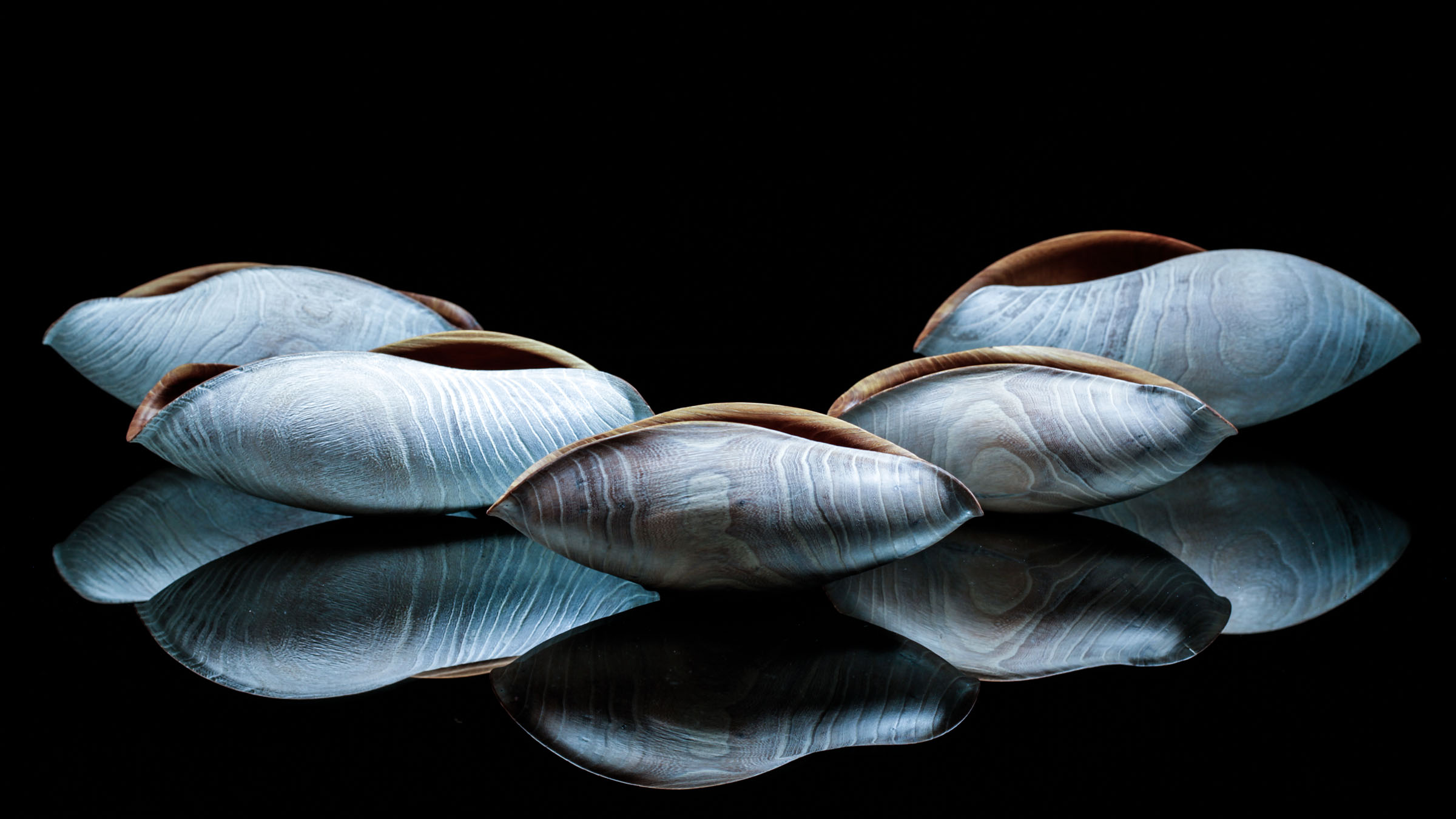

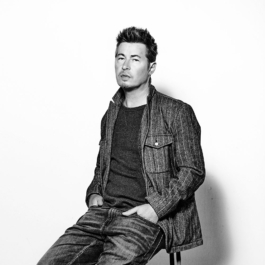

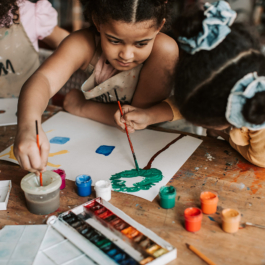


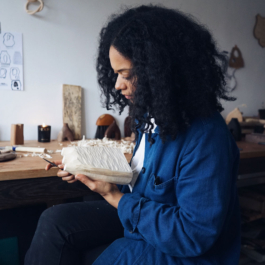
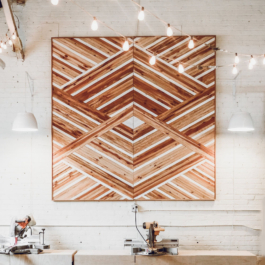
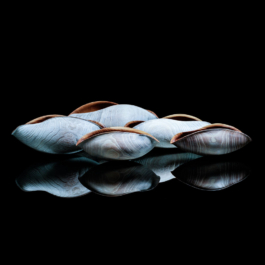
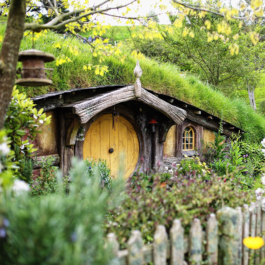

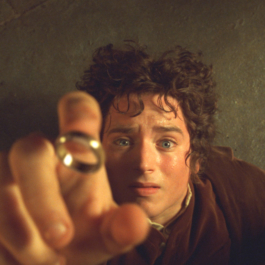
Sorry, the comment form is closed at this time.